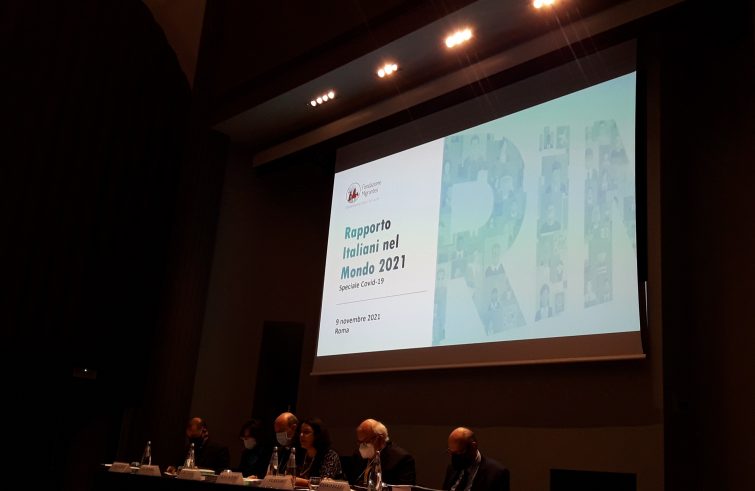
The pandemic has not prevented Italians from leaving in search of a better life abroad. While the numbers are smaller than before, many young men and women, as well as families, have left the country. A total of 109,528 Italians – 21,408 less than in 2019 (a 19.5% decrease) have moved abroad. Of these, 78.7% emigrated to another European country. This trend contrasts with the steadily increasing numbers of the past 16 years, recording a 82% increase in the Italian population worldwide. As of 1 January 2021 5,652,080 Italians were living abroad (9.5% of over 59.2 million Italians residing in Italy), a 3% increase over the past year, namely 166,000 people. This figure corresponds to the number of immigrants living in Italy.
Conversely, Italy has lost 384,000 of its residents. These are some of the key findings of the 16th Italians in the World Report 2021 published by the Migrantes Foundation, presented in Rome on Tuesday.
More women, families and children. Among over 5.6 million people registered with A.I.R.E. (Register of Italians Residing Abroad) 45% are 18-49 years old, 15% are minors and 20.3% are over 65. “In the years 2006-2021 we have also seen a feminisation process of Italian emigration. In fact, the number of female expatriates has increased by 89%, with a higher proportion of families and an overall younger age bracket, with 158% more foreign-born and 76% more minors”, explained Delfina Licata, chief editor of the Report. Sicilians are the largest expat community, with over 798,000 registrations, followed by Lombardy, Campania, Lazio and Veneto. There are more Italians in Argentina (884,187, 15.6%) than in Germany (801,082, 14.2%), with a significant number in Switzerland (639,508), Brazil, France, the United Kingdom and the United States.
Out of 109,528 Italians who have moved abroad over the past year despite the pandemic, 54.4% (59,536) are male. From January to December 2020, a total of 222,260 Italian citizens were registered with AIRE, a 13.7% decline compared to the previous year when they numbered close to 258,000. Within the overall decline in the number of departures, amounting to a 16.3% drop, senior citizens (-28.7% in the 65-74 age group and -24.7% in the 75-84 age group) and children under the age of 10 (-20.3%) account for the major decreases, probably due to a greater vulnerability of these age groups in times of COVID-19.
Priority to young people. “The new emigration of young people is a priority and a pastoral concern for the Church in Italy today. Italians are emigrating on a massive scale today and young people constitute the largest group”, pointed out Monsignor Stefano Russo, Secretary General of the Italian Bishops’ Conference, in his opening remarks. “What are we called to do for the many Italian-speaking faithful who move abroad in search of personal and professional fulfilment? Moral and spiritual guidance alone is not enough. The Church should be a life companion for each one of them, the parish their home.”
The “inestimable value” of Italians abroad. In a message to participants, the President of the Republic Sergio Mattarella highlighted the “human, cultural and professional contribution” of Italians in the world. Theirs is a presence “of inestimable value in the context of the soft power that makes it possible for our country to rank among those whose lifestyle model is most appreciated and valued.” “The networks that inspire and form this unique Italian value,” the Head of State remarked, “deserve recognition and support.” In his concluding remarks, Monsignor Giancarlo Perego, archbishop of Ferrara-Comacchio, President of Migrantes Foundation, called upon Catholics communities to “accompany these people: it forms part of a cultural, political and social commitment.”












